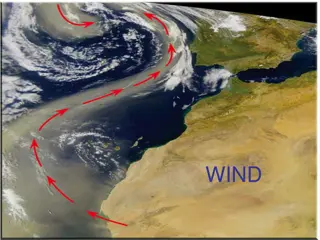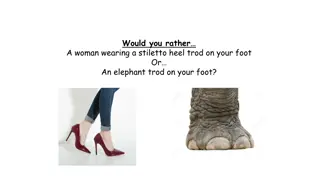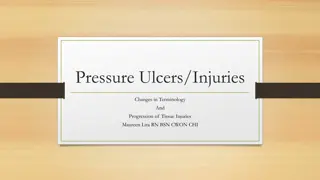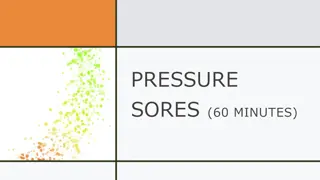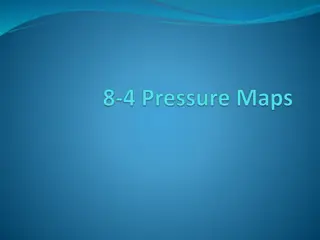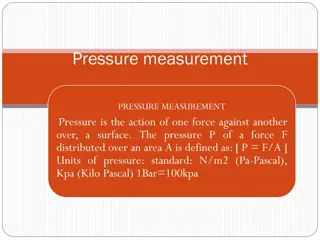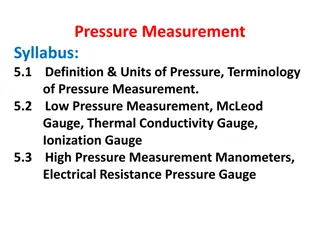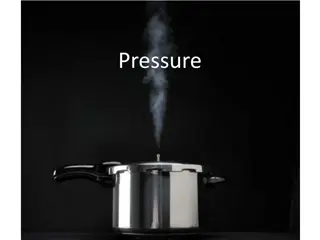Understanding Pressure: Force, Area, and Application
Pressure is a fundamental concept in physics, defined as the force acting perpendicular to an object's surface area. This article explores what pressure is, how to calculate it, and provides examples of its application in everyday scenarios. Learn about the relationship between force and area, the formula for calculating pressure, and the significance of surface area in distributing pressure effectively.
Download Presentation

Please find below an Image/Link to download the presentation.
The content on the website is provided AS IS for your information and personal use only. It may not be sold, licensed, or shared on other websites without obtaining consent from the author. Download presentation by click this link. If you encounter any issues during the download, it is possible that the publisher has removed the file from their server.
E N D
Presentation Transcript
What do we already know about pressure? Pressure is a force which acts at right angles on an object Pressure is exerted downwards by a solid object If the area a force acts on is small, a greater pressure will be given If the same force was applied to a larger area the pressure will be reduced. Gases and liquids exert pressure in all directions
How do we calculate pressure? Pressure can be calculated by dividing the force by the area Pressure = force area Pressure is measured in Pascals (Pa) We sometimes see pressure being measured in N/m2or N/cm2 1Pa is the same as 1N/m2
Sensible shoes? The force of our body pushing down will exert a pressure The surface area of our shoes in contact with the ground will affect the pressure These stiletto shoes will concentrate the force over a small area These shoes will give a larger pressure and would not be suitable for walking on soft ground
More sensible shoes These boots have a large surface area The weight of a person is spread out over the larger surface The pressure exerted by the person is smaller than if they were wearing stiletto shoes A small pressure means you will not sink into soft ground
Examples of where a large area is needed to reduce pressure. Caterpillar tracks on diggers and on tanks Tyres on a tractor Skis and snowboards snowshoes
Examples of where a small area is needed to increase the pressure Nails Needles Kitchen knives Scissors Drawing pins Spade
Questions on pressure 1) What combination of force and area give a high pressure? 2) What combination of force and area give a low pressure? 3) What is the formula for calculating pressure? 4) What units are pressure given in? Answers: 1) Large force and small area 2) Small force on large area 3) Pressure = force /area 4) Pascals (Pa)
Practice using the formula for pressure Answers: 1. 100 Pa 1. A box weighs 500N. It s base has an area of 5 m2. What pressure does it exert? 2. Another identical box is placed on top of the first box. What is the pressure now? 2. 200 Pa 3. 120 Pa 3. A snowboarder weighs 600N. The area of the snowboard is 0.5m2. What is the pressure on the snow?
Liquid pressure Liquids are made up of particles The particles can move in all directions The pressure exerted by a liquid acts in all directions too Liquids with a high density will exert a higher pressure As you go deeper, the pressure increases
Water pressure and body pressure Water pressure acts in all directions on this fish The fish s body pushes back with an equal and opposite pressure
List the fish under the highest pressure to the lowest pressure Angel Flipper Snapper Bubbles Snapper Bubbles Angel Flipper
Water pressure and scuba diving When this deep sea diver goes deeper, the water pressure on his body increases. This will cause his blood pressure to increase. The increased pressure inside his body causes gas exchange in his lungs to happen at a greater
Problems for scuba divers As a diver ascends the water pressure will decrease, and the diver s blood pressure will decrease. The nitrogen which dissolved in the blood easily under high pressure will come back out. If the diver decompresses too quickly the nitrogen leaves the blood so quickly it will bubble and fizz like carbon dioxide from a bottle of pop. This is known as the bends .
A cure for the bends A diver can go into a decompression chamber to avoid getting the bends The pressure in the chamber is controlled to change slowly from high pressure to a low pressure. This allows the diver s pressure to decrease slowly to avoid nitrogen leaving the blood so quickly.
This powerpoint was kindly donated to www.worldofteaching.com http://www.worldofteaching.com is home to over a thousand powerpoints submitted by teachers. This is a completely free site and requires no registration. Please visit and I hope it will help in your teaching.






